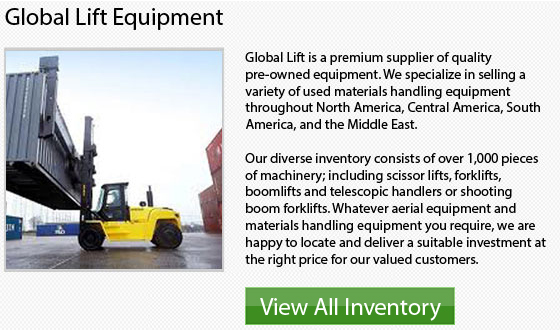
Here are add-ons which are really helpful for narrow aisle lift trucks:
Side shift: Side shift is an option that permits the lateral movement of the load without having to move the model. This enables loads to be accurately positioned.
Tilt mast: The tilt mast option allows the forks to shift forwards and backwards. This is perfect in cases where loads aren't entirely level. To be able to gain more stability when transporting a loaded truck, the mast can be tilted back.
Extendable forks: The option of extendable forks helps the "reach" of the lift truck to extend for stacking pallets one in front of the other, referred to as "double-deep" loading.
Operator platforms: Operator platforms enable some NA lift trucks to lower and raise the operator while the forks are being lowered or raised. This provides optimum visibility and control while dealing with loads at heights of 6 to 9 meters.
Lift Truck on a Ramp
Operators have to be well taught and must be tested and licensed. It is vital for anybody operating a forklift to be very knowledgeable regarding safety guidelines and concerns. Drivers need to understand how to make adjustments on uneven surfaces or in situations where the load weight alters the center of gravity. Safety measures cover safely using a lift truck on a ramp, that is a frequent happening as the driver will normally have to drive up and down ramps to load and unload containers.
Guidelines for Utilizing a Forklift on a Ramp
1 Drive slowly while approaching a ramp and when driving down and up the ramp. The risk of mishaps is increased when driving at high speeds since this could upset the equipment's center of gravity.
2 While not carrying a load, drive the lift truck in reverse when moving up an incline on a ramp.
3 Drive forward while moving down an incline on the ramp with no load.
4 Tilt the forks slightly back to shift the center of the load to the machine's front, when moving down or up a ramp while carrying a load.
5 To make the load more stable, drive forward up a ramp when carrying a load.